The Poverty That Blights Us All
 We face a political season in the fall that will be full of Republican calls to continue the Bush tax cuts and conservative demands to scale back government spending. Those calls are already in full cry, and with the mid-terms looming, we can only expect more of the same – arguments like this, placed by Arthur Laffer in the August 2nd edition of The Wall Street Journal.
We face a political season in the fall that will be full of Republican calls to continue the Bush tax cuts and conservative demands to scale back government spending. Those calls are already in full cry, and with the mid-terms looming, we can only expect more of the same – arguments like this, placed by Arthur Laffer in the August 2nd edition of The Wall Street Journal.
“Few things are as clear in economics as the fact that high tax rates don’t succeed in raising revenue or increasing the burden on the wealthy….Not only do the direct tax consequences of higher tax rates on those in the highest brackets lead to higher deficits, the indirect effects magnify the tax revenue losses many fold. As a result of higher tax rates only on those people in the highest tax brackets, there will be less employment, output, sales, profits and capital gains – all leading to lower payrolls and lower total tax receipts. There will also be higher unemployment, poverty and lower incomes, all of which require more government spending. It’s a Catch-22. Higher tax rates on the rich create the very poverty and unemployment that is used to justify their presence.”[1]
Really? Oh that it was that simple. But it is not – not, for at least the following four sets of reasons, no one of which appeared alongside the Laffer piece in the paper most widely read in US business circles.
1. Contrary to the logic of the Laffer argument, the Bush tax cuts did not generate the generalized economic prosperity that those advocating their retention now imply. It was indeed the case that the Bush tax cuts did disproportionately advantage the rich. They were the kind of tax cuts that the Laffer argument requires. The Bush tax cuts of 2001 lowered income tax for the top ten percent of American taxpayers by $50,000 a year. They lowered taxes for the average American family by just $300.[2] But what they did not do was generate investment and job creation on the scale which their advocates anticipated. As Alan Greenspan later put it, “I think we misunderstood the momentum of this deficit going forward.”[3] So it would appear, since the Bush tax cuts he originally supported triggered the least successful investment cycle in US post-war history, and simply failed to add any numbers to the total employment of the economy as a whole. The bulk of the leading companies whose tax burden the Bush administration eased responded by lowering rather than raising their levels of corporate investment in plant and equipment here in the United States.[4] This perhaps helps to explain why total employment in the US economy as the tax cuts began, at 132 million, was slightly higher than the number as those employed (131.4 million) three years later when the tax cuts had been long up and running.[5]
It is a remarkable truth, often overlooked by those advocating the prolongation of the Bush program, that “the economy did not add a single job during three years under the Bush tax cuts.”[6] For tax-cutting and out-sourcing were partners in the years of Republican leadership. So too were tax-cutting and growing income inequality.[7] And we should remember that, as economic recession unexpectedly reappeared on George Bush’s watch after six years of favoring the rich, even his administration responded by providing a tax cut of between $600 and $1,200 to middle-class rather than to upper-class America.[8] Trickle-down economics had so failed by 2007 that even its advocates in the White House quietly adjusted to trickle-up economics; supported at the time by the votes in Congress of many of the Republican House members and Senators who now advocate so strongly tax-cutting for the top 2 percent of income earners. Alan Greenspan thinks it is a good idea to let the tax cuts expire as intended in 2010.[9] Even Tim Geitner agrees:[10] and so should sane people everywhere.[11]
2. Contrary to popular wisdom in conservative circles, tax-cutting and the restraint of public spending is not the most effective way of generating economic growth and job creation in economies beset by recessions of this depth. Welfare spending and public investment in infrastructure are much more effective tools to end a recession of the kind we now face – one sustained by lack of consumer confidence and demand – than any tax cuts can ever hope to be. We have two very strong bodies of evidence to sustain that claim. The first is the widely accepted calculations of Mark Zandi (who worked for John McCain in the 2008 election campaign, we should remember, not for Barack Obama) that cutting taxes on capital gains and dividends is only likely to stimulate the economy by 37 cents for every dollar of taxation foregone. If that same dollar is directed at infrastructure development, the stimulus will be $1.57; if at unemployment insurance, $1.69; and at temporarily increasing food stamps, $1.74.[12] The second is the report published last week by Alan Blinder (and again Mark Zandi) recording the remarkable impact of TARP and stimulus spending on the recession to which they were a response. The stimulus money was not as focused on infrastructure spending as its more radical advocates would have preferred: the price of even the possibility of Republican support was the inclusion in the stimulus package of $250 billion of direct tax cuts, targeted at middle-America. But even a package full of tax cuts as well as spending programs had significant effects: “raising 2010 real GDP by about 3.4%, holding the unemployment rate about 1½ percentage points lower, and adding almost 2.7 million jobs to U.S. payrolls.”[13] This is not to say that TARP and the ARRA were perfect. They were not.[14] It is to say rather that, without them, our current situation would be significantly worse.
3. TARP is ending, of course, even though the recession persists; and all the evidence suggests that the avoidance of a double-dip recession will require a second stimulus package, and not a short-term return to government spending cuts as conservative critics now demand. For as an economy and society, we are not in good shape right now.[15] On the contrary, economic growth is sluggish,[16] unemployment is high and prolonged,[17] personal bankruptcies are on the rise,[18] and where recovery is happening, employers are proving slow to rehire, preferring instead to increase the length and intensity of work for those already on their payroll.[19] In June the private sector created just 71,000 jobs while the temporary cushion of census employment ended for 143,000 Americans.[20] Right now, even if the economy was miraculously to “sustain the strongest pace of job growth seen in the boom of the late 1990s (2.6% in 1998), it would still take until 2015 to return to pre-recession levels of unemployment.”[21] Remarkably, “more than half of all adults in the U.S. labor force have suffered a spell of unemployment, a pay cut or reduction in working hours”[22] since this recession began: so confirming that “out of the 13 recessions the U.S. has endured since the Great Depression of 1929-33, none has presented a more punishing combination of length, breadth and depth than this one.”[23]
Yet in Washington there is still no automatic trigger that releases additional unemployment pay to the long-term unemployed. Instead it is all politics there, and we have just witnessed the appalling spectacle of the Republican leadership playing loose and fast with the issue –willingly funding the Afghan War with more money ($37 billion) than the $34 billion they temporarily denied to the long-term unemployed, before just failing to block $26 billion of extra funding to the states (to protect the jobs of teachers, police officers and fire-fighters) that was won at the cost of cuts in planned long-term spending on food stamps. Currently we are combining a deep recession with a dysfunctional politics, and it is the poor who are paying the most direct price for both.
4. Policy inertia of this kind only reinforces a divide between the rich and the poor which TARP did not alleviate and which the recession has only intensified. The result is that contemporary America remains scarred by a scale of income inequality, and an associated depth of poverty, that actually hurts us all. Not two years out from a financial crisis caused by Wall Street recklessness, and the very bankers who triggered the crisis are back rewarding themselves with huge bonuses as CEO salaries continue to soar.[24] Meanwhile, and at the other end of the American income ladder, unemployment remains particularly high among groups which were already poor;[25] and rates of economic insecurity are at an all-time high.[26] In 2008, one American family in seven reported that they experienced “food insecurity”[27] and “16.6 million American children – more than one in five – lived in homes that couldn’t afford enough food for their families.”[28] Indeed, “because of stagnating wages and higher costs for basic necessities, the average two-wage earner family [now] has less disposable income than a one-wage-earner family did a generation ago.”[29]
The gap between rich and poor is now so stark that – unless the soothing balm of “trickle-down economics” can be applied to any thinking brain – moral outrage ought to be the general order of the day. But even if it is not, even if the prevailing response is one of personal selfishness, the personally selfish would do well to realize that income inequality of this scale actually hurts us all. The clearest evidence for that is now to be found across the Atlantic, where a new study of the economic and social impact of income inequality – The Spirit Level – demonstrates conclusively that societies more equal than ours (or indeed the UK’s) “enjoy better physical and mental health, lower homicide rates, fewer drug problems, fewer teenage births, higher math and literacy scores, higher standards of child wellbeing, lower obesity rates and fewer people in prison.”[30]
The bulk of the Bush tax cuts are in any case due to remain in place. The only part that will be allowed to lapse is the one extending the tax cuts to the top 2 percent of income earners – those earning more than $250,000 a year.[31] So the question must be asked. Are the advocates of the Bush tax cuts really interested in generalized prosperity, as they claim; or is their “trickle-down” argument just a smokescreen for a politics of selfishness and greed. It certainly looks like the latter to me. Time, I think, to call their bluff. What is it to be: taxes for the wealthy, or cuts in food stamps for the poor? We really need to know.
[1] Arthur Laffer, “The Soak-the-Rich Catch-22”, The Wall Street Journal, August 2, 2010
[2] The details are in David Coates, Answering Back: Liberal Responses to Conservative Arguments, New York: Continuum Books, 2010, p. 43
[3] Interviewed by Bloomberg’s Judy Woodruff, July 16, 2010
[4] “In the aggregate, the 25 companies getting the most from accelerated depreciation cut their total property, plant and equipment investments by 27 percent from 2001 to 2003.” This, and the data in the text, are in the September 2004 report of the Citizens for Tax Justice and the Institute on Taxation and Economic Policy, Corporate Income Taxes in the Bush Years, accessible at http://www.ctj.org/corpfed04an.pdf. (I am grateful to Mary Beth Morrissey for this source.)
[5] The contrast with rates of job creation in the 1990s is marked. The US economy added 18 million jobs between August 1993 and August 1999 – 111 million to 129 million jobs – a 16.2 percent increase. (This data is from Michael Linden and Michael Ettlinger, Three Good Reasons to Let the High-End Bush Tax Cuts Disappear This Year, Washington DC: The Center for American Progress, July 30, 2010, accessible at http://www.americanprogress.org/issues/2010/07/let_cuts_expire.html).
With tax rates on the rich operating at the level to which they will return at the end of 2010, the Clinton administration oversaw the creation of 22.5 million jobs in total, of which 92 percent were in the private sector. (On this, see Robert Creamer, Why Congress Must End Bush Tax Breaks for the Rich, posted July 28, 2010 and accessible at
[6] The next three years were slightly better, taking the total to 137.7 million, a 4.8 percent increase. (Source: Linden and Ettlinger, op.cit.)
[7] “The simple truth is that the wealthy in the United States – the people who have made almost all the income gains in recent years – are under-taxed compared with everyone else. Consider…findings from the Congressional Budget Office showing that ‘the gap in after-tax income between the richest 1 percent of Americans and the middle and poorest fifths of the country more than tripled between 1979 and 2007.’ [or]…Internal Revenue Service data [which showed] that the effective federal income tax for the 400 taxpayers with the very highest incomes declined by nearly a half in just over a decade, even as their pre-tax incomes have grown five times larger.” (E.J. Dionne, “In American politics, stupidity is the name of the game”, The Washington Post, July 29, 2010)
[8] For the limited impact of even those cuts, see Matthew D. Shapiro and Joel Slemrod, Did the 2008 Tax Rebates Stimulate Spending? NBER Working Paper 14753, February 2009: accessible at http://www.aeaweb.org/annual_mtg_papers/2009/retrieve.php?pdfid=294
[9] Interviewed by Bloomberg’s Judy Woodruff, July 16, 2010
[10] “America is a less equal country today than it was ten years ago, in part because of the tax cuts for the top 2 percent put in place in 2001 and 2003.” (Tim Geitner, cited by Verbalpaintball on Daily Kos, August 5, 2010, accessible at http://www.dailykos.com/story/2010/8/5/890465/-Geithner:-America-Less-Equal-Today-Thanks-To-Bush-Cuts.
[11] Lest anyone believe, with Senator Hatch, that allowing the tax cuts to lapse would be “a job-killing tax on small businesses during tough economic times”, they should remember that virtually no small businesses make the kind of income that would bring them into the top tax brackets. (This from William G. Gale, ‘Five myths about the Bush tax cuts,” The Washington Post, August 1, 2010)
[12] Alan Blinder and Mark Zandi, How the Great Recession Was Brought to an End, July 27, 2010, p. 16
[13] The report is accessible at: http://www.economy.com/mark-zandi/documents/End-of-Great-Recession.pdf
[14] Robert Reich put it this way in The Wall Street Journal the day after the Laffer piece. “TARP was a clear financial success. It brought Wall Street back from the brink of collapse and in the end will cost taxpayers less than $100 billion. Yet in a larger sense, TARP failed. The bailout of Wall Street had been sold…as a way to revive Main Street and protect homeowners and jobs. But it didn’t accomplish those broader goals. Small business owners have had difficulty getting loans. Few homeowners …have had their mortgages permanently modified….A stimulus too small to significantly reduce unemployment, a TARP that didn’t trickle down to Main Street….have all created an enthusiasm gap. They’ve fired up the right, demoralized the left, and generated unease among the general population.” (Robert Reich, “The Obama Agenda and the Enthusiasm Gap”, The Wall Street Journal, August 3, 2010)
[15] For earlier updates on the state of employment and poverty under the Obama presidency, see
https://www.davidcoates.net/2010/01/12/chapter-3-the-story-in-2009/
https://www.davidcoates.net/2010/02/12/chapter-3-recent-developments-in-2010/ and
https://www.davidcoates.net/2010/06/05/the-recession-may-be-over-but-unemployment-is-not/
[16] An annualized growth rate of just 2.4% in the first quarter
[17] The number out of work for more than 27 weeks is currently 6.6 million. Those out of work, or in part times jobs for want of anything better, may be as high as one American worker in five.
[18] Up by 9% in July on June, to 137,698. “So far this year, there have been nearly 908,000 personal bankruptcy filings, representing roughly one in every 125 American households.” (Sara Murray, “Bankruptcies Rise, Reversing a Trend,” The Wall Street Journal, August 6, 2010)
[19] On this, see Robert Reich, The great Decoupling of Corporate Profits From Jobs, posted July 26, 2010 and accessible at http://www.huffingtonpost.com/robert-reich/the-great-decoupling-of-c_b_660048.html
[20] “Another 131,000 jobs were lost in July…and job loss in June was revised to 221,000, from 125,000. The unemployment rate held steady, at 9.5 percent, but that is only because 181,000 people quit looking for work last month.” (The New York Times, August 8, 2010) Manufacturing employment was up, by 36,000, and the job loss rate was well down on the 750,000 a month figure at the depth of the recession in December 2007: but still, if private sector employment continues to grow at this slow pace, total employment will not return to pre-crisis levels for 13 years! (see Heather Boushey, Slow Progress for American Workers, Washington DC: Center for American Progress, August 6, 2010; accessible at
http://www.americanprogress.org/issues/2010/08/july_jobs.html
[21] EPI News, August 5, 2010: Economic Policy Institute,[email protected]
[22] Miriam Jordan, reporting on new Pew research findings in The Wall Street Journal, June 30, 2010
[23] Ibid.
[24] To be fair, CEO median pay packages in the top 200 U.S. companies slipped back last year, to a mere $7.7 million! Average total pay fell too, to $9.5 million. Twelve of the top-paid CEOs were TARP recipients in 2009, with a median annual salary of just $6 million. (The full data is in The Wall Street Journal for April 1, 2010 and The New York Times for April 2nd.) Spare a thought for Mr. Lawrence J. Ellison of Oracle, who was the highest paid chief executive in the survey cited in both papers. He apparently made $85 million in 2009. All but $6 million of that were reportedly taken as stock options.
[25] Black unemployment is currently 15.6%, Hispanic unemployment is 12.1% – as against 8.6% for white Americans. For the current pressure on black middle-class life earning capacity, see Orlando Patterson, Can’t Call It Progress: African-Americans Are Earning Less Than Their Parents Did, posted July 8, 2010 and accessible at http://www.alternet.org/story/147452
[26] In 2009, maybe “more than 20 percent of Americans experienced a 35 percent or greater loss of income – without a financial cushion over the prior year – the highest in at least a quarter of a century.” (Bob Herbert, “Long-term Economic Pain”, The New York Times, July 26, 2010) citing a new study by researchers at Yale led by Jacob Hacker. A full report on that research is available at http://money.cnn.com/2010/07/21/news/economy/economic_insecurity/index.htm
[27] This is a measure published by the Department of Agriculture, and based on questionnaire data. At 14.6%, the 2008 findings were the highest since the surveys began in 1995.
[28] Joel Berg, Feeding Opportunity, Washington DC: The Center for American Progress, May 2010: accessible at http://www.americanprogress.org/issues/2010/05/feeding_opportunity.html. see also Caroline Ratcliffe and Signe-Mary McKernan, Childhood Poverty Persistence: Facts and Consequences, Washington DC: The Urban Institute, 2010, accessible at http://www.urban.org/publications/412126.html
[29] Senator Bernie Sanders, at http://www.thenation.com/article/37889/no-oligarchy
[30] Nick Cohen, “The book that has the Tories running scared”, The Observer, August 8 2010. The evidence can be accessed at http://www.equalitytrust.org.uk/. The data is also to be found in Tony Judt, Ill Fares the Land, New York: Penguin, 2010
[31] Linden and Ettlinger (op. cit) estimate that extending the Bush tax cuts for the wealthy would cost $80 billion over two years, and $830 billion over ten years.
David Coates holds the Worrell Chair in Anglo-American Studies at Wake Forest University. He is the author of Answering Back: Liberal Responses to Conservative Arguments, New York: Continuum Books, 2010.
He writes here in a personal capacity.
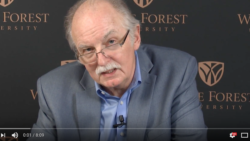
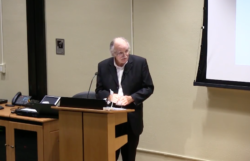
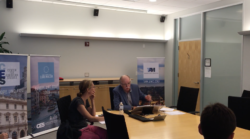
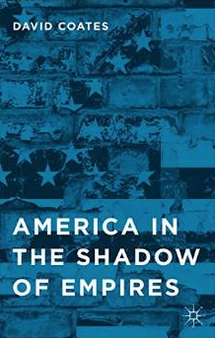
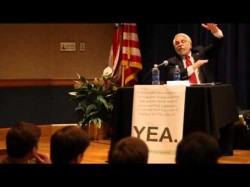

David Coates: Poverty Amid Plenty – America’s Continuing Shame | Politimo says:
[…] of median income (say 60 percent, as do the Europeans); and if we do, we must see overwhelming evidence of the persistence of genuine poverty in the midst of all our contemporary affluence: evidence such […]